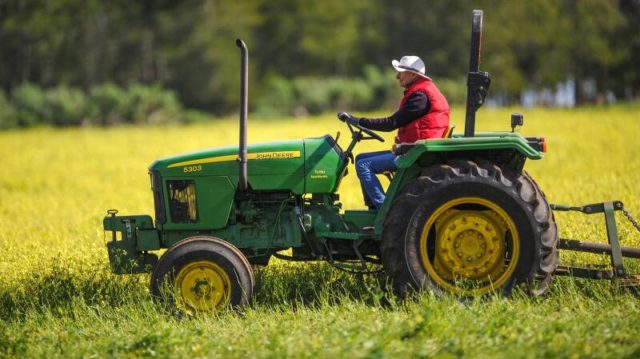With the summer planting season approaching, farmers are getting more desperate to obtain access to financing, potentially threatening production, says an agricultural interest network for farmers.
WITH the summer planting season approaching, farmers are getting more desperate to obtain access to financing, potentially threatening production, says the Southern African Agri Initiative (Saai), an agricultural interest network for farmers.
Board chairperson Dr Theo de Jager and Saai chief executive Francois Rossouw said agricultural financing remained one of the toughest challenges for farmers in South Africa amid the Land Bank’s financial woes.
“While most people will remember 2020 as the year of disasters such as the Covid-19 pandemic, fires and drought, farmers will remember it as the year the Land Bank collapsed, leaving them in a financing vacuum,” said Saai.
Last month, Bloomberg reported that South Africa’s largest lender to farmers was asking creditors to approve a split of its operations in two to help repay debt over the next five years and claw its way out of a default position.
The state-owned Land and Agricultural Development Bank proposed a reorganisation into a corporate and commercial business and a separate one focused on development projects. Cash proceeds from the former would go toward commercial borrowings before the unit was wound down.
Saai has said that out of great need, many institutions from the private sector have stepped in to try to fill the void left by the Land Bank.
While the rainy weather outlook presented a conducive environment for higher crop yields in the 2021/22 season, farmers are contending with rising input costs. In July, agrochemicals such as glyphosateand acetochlor were up by 151 percent from July last year, while fertiliser products such as ammonia and KLC were also up by over 100 percent.
This meant that the profitability margins for this year would be squeezed and farmers had to work on receiving higher yields to thrive.
Saai said commercial banks had picked up some of the slack by financing hundreds of former Land Bank clients, but at a slightly higher cost. Commercial banks, however, focused on the larger farmers and were cherry-picking among the strongest and the best established farmers, making it harder for smaller and medium-scale farmers to access such opportunities.
Some co-operatives and agricultural input providers have sourced foreign financing to replace the Land Bank as the original lender, Saai added. The process has risks, however, such as volatile exchange rates and it takes the co-operatives the better part of five years to set up the channels and put the processes in place before the facilities became available.
A short-term option is the forward-buying of products, especially from importers in the Middle East. With an abundance of opportunities available there, Saai noted that it would do little to ensure national food security.
Rabobank, the Netherland co-operative bank present in several African countries, is said to have expressed its appetite and conditions for expansion into the South African market.
Saai said it was hoped that a co-operative bank could be set up in South Africa, one that would belong to the farmers.
Last week, the Agbiz/IDC Agribusiness Confidence Index for the third-quarter deteriorated from 75 points registered in the second quarter this year.
– BUSINESS REPORT








